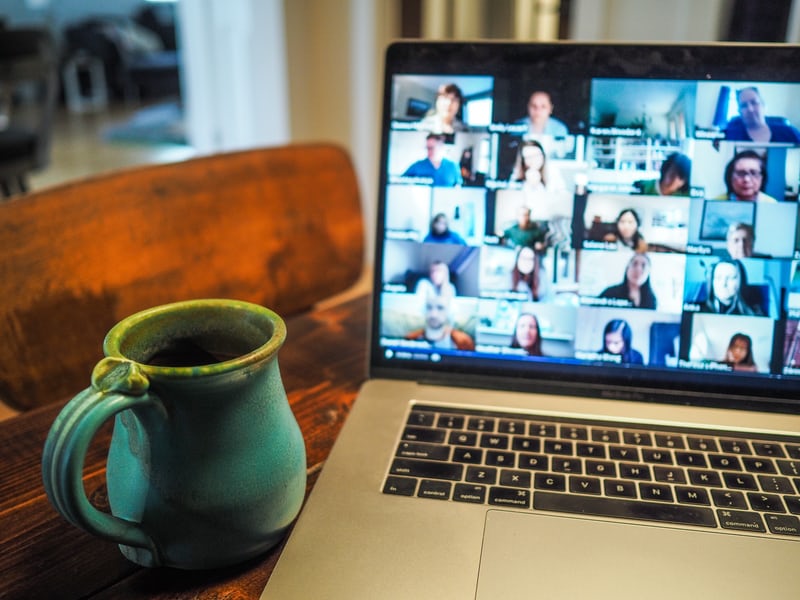Classes ‘Zoom’ to online format amid pandemic.
by Naia Fermino
Lifestyles, everyday activities and schedules have been forced to change dramatically due to Coronavirus (COVID-19). That fun night out to a restaurant with friends is no longer an option and some are scrambling trying to figure out how to pay this month’s bills because they are out of a job. Many schools across the country are now going entirely online due to concerns about COVID-19, including Cape Cod Community College (4Cs). Individuals are navigating the best they can through the unknown and attempting to adapt. That unknown for many students is now taking online classes in Zoom.
Zoom is a service that provides conferencing through video, audio and online chatting. Individuals can use Zoom on most mobile devices and through a laptop or desktop. The free video conferencing allows up to 100 people to join. It’s also remote and you can participate in a conference from virtually anywhere as long as you can connect to internet or have cellular service. As one could imagine, this is a way for a lecture or class to meet off-campus when meeting in an actual classroom is not possible.

“I have never used Zoom before,” said 4Cs student Carly Crooker. “I don’t dislike Zoom, at first when I was unfamiliar on how to use the application it was frustrating. Now that I’m aware it is very effective.”
Before joining a scheduled conference for a class, the professor or host needs to provide a code, which a student will type into Zoom to join the conference.
“I have never used Zoom before for anything,” said 4Cs student Paige Higgins. “I’ve logged on twice and things went well, but the only thing I’d say is that having a different access code each time can be a little annoying.”
As a student, you are expected to get to know the program if your professor is using it in a class. For most classes, the Zoom meeting will not just be a one-time thing, but will substitute for your original class time meeting whether that be once, twice or three times a week. So, by default, students will probably be getting plenty of exposure to Zoom and its features.
“An advantage of this experience is that it gives faculty and students alike experience with remote communication technology,” said Lisa Heller Boragine, an Arts & Communication professor at 4Cs. “Which are going to be increasingly important in our society. Students who can become proficient in using these technologies will be at an advantage.”
Although seeing each other’s faces would be something we regularly do in class, Zoom gives the option for students or even the professor to hide their face completely. Unless, of course, a professor requests your camera be turned on.
“I feel comfortable voice chatting always,” said Higgins. “Video chatting if I’m presentable.”
If the professor does not require video, then the choice is completely up to the student. So is the audio chat as well.
“I prefer not to use the video camera,” said Crooker. “If my teacher believes it is more effective with our video cameras on, I am not completely opposed to the idea.”
This is not only a big change for students who are not familiar, but for professors as well. The virtual learning environment is not the same as face-to-face.
“Zoom definitely changes the dynamic of the classroom because it changes the flow of conversation,” said Boragine. “Discussions are a little less organic because there is often a pause after I ask a question. Students can’t see who else wants to speak and it is harder to regulate the start and stop of conversations.”
More creative, hands on classes are especially difficult to do online. However, professors of these classes have also utilized Zoom in attempt to keep their classes going. Jerry Skelley, a music professor at the college, has been able to move his music classes online.
“I taught two private piano lessons from my laptop,” said Skelley. “And one of the students suggested he could photograph his music of the day and email it to me.”
In a situation like this, Skelley has worked with what he’s got. He’s also discovered that he can use Zoom on an old art tablet of his when connected to Windows 10 and then connect his computer to the TV to make Zoom appear bigger.
Zoom makes it possible to connect students and professors in another way than just Moodle and email. It may also help maintain in some way the structure that students had, but not every class is using it.
“It’s not necessary, I know a few classes that are not using it,” said Boragine. “There are quite a few 4Cs online courses that have never used video.”
After this experience with Zoom, students and professors may be more apt to use it. It will be something that we are all a little more familiar with than we were before.
“I would use Zoom in the future if face-to-face interaction isn’t possible,” said Higgins. “I think it’s a fairly easy and non-intrusive way to connect.”
Zoom is something that will now be a part of many people’s new weekly routine during the quarantine. It is something that can hopefully best substitute for the real thing and class time. A 4Cs Student Resource Guide is also available on the My 4Cs homepage to help transition to online learning. At the end of the day, Zoom is just another tool in our academic toolbox.
Categories: Featured, Around Campus